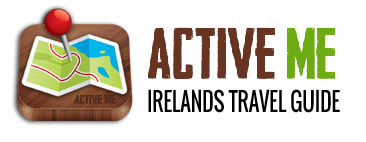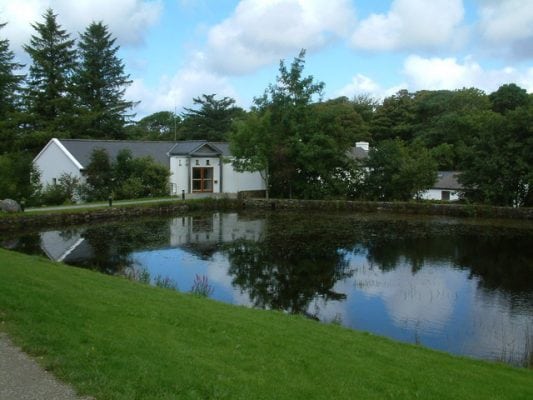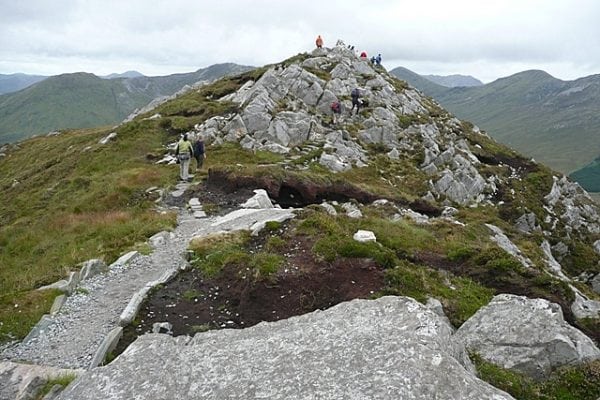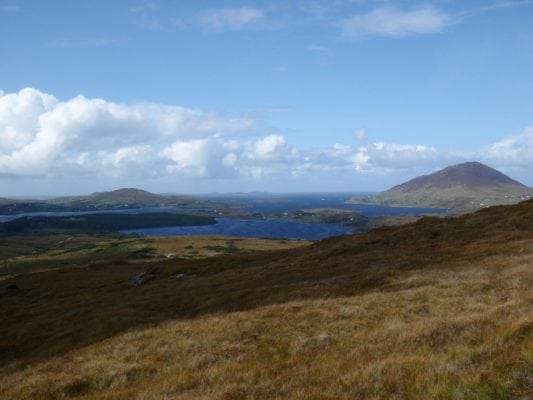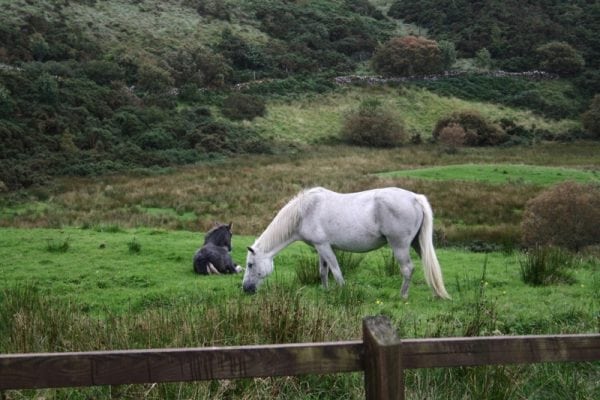- Created: August 28, 2012 10:32 am
- Updated: December 12, 2017 11:02 am
- Distance Instructions
- Distance 43 km
- Time 0 s
- Speed 0.0 km/h
- Min altitude 4 m
- Peak 681 m
- Climb 1896 m
- Descent 1896 m
Connemara National Park is located to the west of Galway City in the west of Ireland. It is one of six National Parks in Ireland and covers nearly 3,000 hectares of amazing scenic mountains, expanses of bogs, heaths, grasslands and woodlands. Some of the Park's mountains, namely Benbaun, Bencullagh, Benbrack and Muckanaght, are part of the famous Twelve Bens or Beanna Beola range. Small sections of the park near the visitor centre have paths that are accessible to mobility impaired users.
Much of the present Park lands formed part of the Kylemore Abbey Estate and the Letterfrack Industrial School. There are many remnants of human civilization within the park. There is a 19th century graveyard as well as 4,000 year old megalithic court tombs.
BIRDS: Connemara National Park is noted for its diversity of bird life and is very popular for bird watching with birders or twitchers coming from all over the worlds to view the bird life. Common song birds include Meadow Pipits, Skylarks, European Stonechats, Common Chaffinches, European Robins and Eurasian Wrens. Native birds of prey include the Common Kestrel and Eurasian Sparrowhawk with the Merlin and Peregrine Falcon being seen less frequently. Woodcock, Common Snipe, Common Starling, Song Thrush, Mistle Thrush, Redwing Fieldfare and Mountain goat migrate to Connemara during the winter.
FAUNA: Mammals are often difficult to find, but are present nonetheless. Fieldmice are common in the woodlands, whereas rabbits, foxes, stoats, shrews, and bats at night, are often sighted in the boglands. Red deer once roamed Connemara but were extirpated from the area approximately 150 years ago. An attempt was made to reintroduce red deer to Connemara and a herd was established within the Park. Nowadays, the largest mammal in the Park is the Connemara pony
FLORA: Western blanket bog and heathland are the most common vegetation of Connemara National Park. The boglands are situated in the wet low lying environments whereas the blanket bog exists within the drier mountain atmosphere. Purple moorgrass is the most bountiful plant, creating colorful landscapes throughout the country side. Carnivorous plants play an important role in the park's ecosystem, the most common being sundew and butterworts trap. Bogs hold very little nutrients so many plants obtain their energy from the digestion of insects. Other common plants include lousewort, bog cotton, milkwort, bog asphodel, orchids and bog myrtle, with a variety of lichens and mosses.
Use our Map of Ireland and Sat Nav tool to get directions to the park and our detailed maps and GPS on our ActiveME App to find and follow the paths and trails within the park live on screen and keep on track. At all times, our maps and App should be used in conjunction proper map and compass navigation techniques.
Gallery
Connemara National Park is located to the west of Galway City in the west of Ireland. It is one of six National Parks in Ireland and covers nearly 3,000 hectares of amazing scenic mountains, expanses of bogs, heaths, grasslands and woodlands. Some of the Park’s mountains, namely Benbaun, Bencullagh, Benbrack and Muckanaght, are part of the famous Twelve Bens or Beanna Beola range. Small sections of the park near the visitor centre have paths that are accessible to mobility impaired users.
Much of the present Park lands formed part of the Kylemore Abbey Estate and the Letterfrack Industrial School. There are many remnants of human civilization within the park. There is a 19th century graveyard as well as 4,000 year old megalithic court tombs.
BIRDS: Connemara National Park is noted for its diversity of bird life and is very popular for bird watching with birders or twitchers coming from all over the worlds to view the bird life. Common song birds include Meadow Pipits, Skylarks, European Stonechats, Common Chaffinches, European Robins and Eurasian Wrens. Native birds of prey include the Common Kestrel and Eurasian Sparrowhawk with the Merlin and Peregrine Falcon being seen less frequently. Woodcock, Common Snipe, Common Starling, Song Thrush, Mistle Thrush, Redwing Fieldfare and Mountain goat migrate to Connemara during the winter.
FAUNA: Mammals are often difficult to find, but are present nonetheless. Fieldmice are common in the woodlands, whereas rabbits, foxes, stoats, shrews, and bats at night, are often sighted in the boglands. Red deer once roamed Connemara but were extirpated from the area approximately 150 years ago. An attempt was made to reintroduce red deer to Connemara and a herd was established within the Park. Nowadays, the largest mammal in the Park is the Connemara pony
FLORA: Western blanket bog and heathland are the most common vegetation of Connemara National Park. The boglands are situated in the wet low lying environments whereas the blanket bog exists within the drier mountain atmosphere. Purple moorgrass is the most bountiful plant, creating colorful landscapes throughout the country side. Carnivorous plants play an important role in the park’s ecosystem, the most common being sundew and butterworts trap. Bogs hold very little nutrients so many plants obtain their energy from the digestion of insects. Other common plants include lousewort, bog cotton, milkwort, bog asphodel, orchids and bog myrtle, with a variety of lichens and mosses.
Use our Map of Ireland and Sat Nav tool to get directions to the park and our detailed maps and GPS on our ActiveME App to find and follow the paths and trails within the park live on screen and keep on track. At all times, our maps and App should be used in conjunction proper map and compass navigation techniques.
